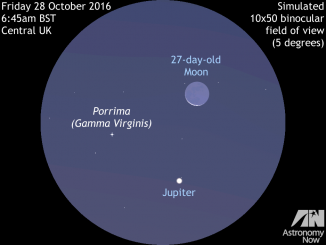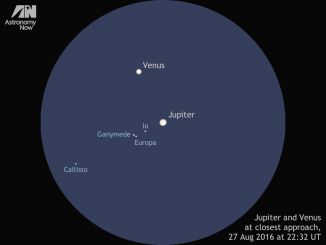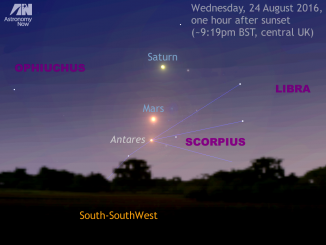
The Moon meets Aldebaran and the Hyades in the evening sky of 15 November
As dusk fades to dark on the evening of Tuesday 15 November, observers in the British Isles and Western Europe can see the rising 16-day-old Moon less than 2 degrees away from Aldebaran in the constellation of Taurus. While an occultation of the star occurs around 17h UT for observers in Japan, central Asia and the Middle East, skywatchers in the UK will have to settle for a near miss.









